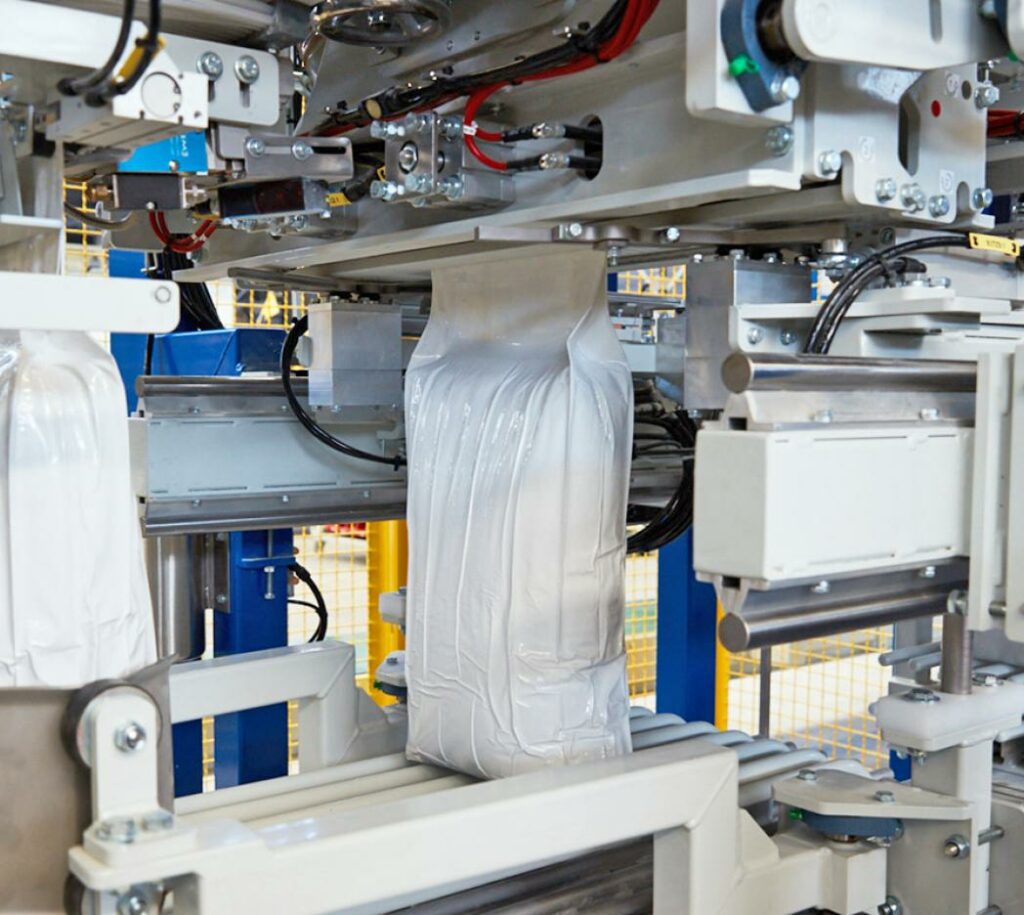The packaging industry has seen significant changes recently. with automation playing a major role in developing new technologies.
Automatic bagging machines are an essential component of the packaging industry. and their speed and efficiency directly impact the sector’s overall productivity. In this blog, we will discuss the role of technology in developing the world’s fastest automatic bagging machines.
Introduction to Automatic Bagging Machines
Automatic bagging machines fill and seal bags automatically. They are commonly used in packaging to pack various products, including food items. pharmaceuticals, and industrial goods.
Automatic bagging machines have become increasingly popular due to their speed. efficiency, and accuracy. They can process a large number of bags in a short amount of time, thereby increasing the productivity of the packaging process.
Advancements in Technology
Technological advancements drive the development of the world’s fastest automatic bagging machines. In particular, robotics, computer vision. and machine learning improvements have significantly developed these machines.
By leveraging these technologies, manufacturers have been able to design devices capable of processing bags at unprecedented speeds while maintaining high levels of accuracy.
1. Robotic Automation
Robotic automation has been a critical driver in the development of automatic bagging machines. Robotic arms pick up bags, fill them with the required product, and seal them.
The use of robotics has enabled manufacturers to design devices capable of processing loads at high speeds with a high degree of accuracy. Robots can also work longer than human operators, thereby increasing the overall productivity of the machine.
2. Computer Vision
Computer vision is another technology that has played a significant. role in developing automatic bagging machines. Computer vision algorithms are used to identify the position. of the bag and the product to be filled.
This information guides the robotic arm to the correct location, ensuring the load is supplied correctly. Computer vision also enables the machine to detect any errors in the packaging process, such as a bag that has not been sealed correctly.
3. Machine Learning
Machine learning is a form of artificial intelligence. that allows machines. to learn from data and improve their performance over time. Machine learning algorithms can be used to optimise. the performance of automatic bagging machines.
By analysing data from the device, manufacturers can identify areas for improvement and make changes to the machine’s design or operating parameters to improve its performance.
4. Integration of Internet of Things (IoT) technology
The integration of IoT technology has enabled automatic bagging machines to be connected to the internet and other devices, allowing for remote monitoring and management of the machine. This technology will help operators to monitor the machine’s performance in real-time and make adjustments as necessary, improving efficiency and reducing downtime.
Additionally, IoT technology enables the collection of data, which can be used to improve the machine’s performance over time through machine learning algorithms.
5. Use of artificial intelligence (AI) for predictive maintenance
AI is being used to develop predictive maintenance algorithms that can detect potential issues in the machine before they become significant problems. This technology uses machine learning algorithms to analyse data from the device, such as vibration patterns and temperature readings, to identify abnormalities.
This allows operators to perform maintenance on the machine before it breaks down, reducing downtime and increasing the overall lifespan of the device.
6. Incorporation of 3D printing technology
3D printing technology creates custom parts and components for automatic bagging machines. This technology enables manufacturers to quickly produce parts that are not available off-the-shelf, reducing lead times and increasing the overall flexibility of the manufacturing process.
Additionally, 3D printing technology allows you to create complex shapes and designs that would be difficult or impossible to produce using traditional manufacturing methods. This technology also enables manufacturers to build prototypes quickly and cost-effectively, allowing for faster development and testing of new machine designs.
7. Adoption of cloud-based software solutions
The adoption of cloud-based software solutions has enabled manufacturers to improve the functionality and capabilities of automatic bagging machines. Cloud-based software allows remote access to the machine’s data and analytics, enabling operators to monitor and manage the device from anywhere.
Additionally, cloud-based software solutions enable manufacturers to incorporate new features and functionality into the machine, such as predictive analytics and machine learning algorithms, without needing physical hardware upgrades.
8. Development of energy-efficient technology
The development of energy-efficient technology has enabled manufacturers to reduce the energy consumption of automatic bagging machines. By using energy-efficient motors, sensors, and other components, manufacturers can reduce the machine’s power consumption without sacrificing performance.
This technology not only reduces the carbon footprint of the device but also reduces operating costs for the manufacturer. Additionally, energy-efficient technology can extend the lifespan of the machine’s components, reducing the need for replacements and repairs.
9. Integration of machine vision technology
Machine vision technology is being integrated into automatic bagging machines to improve the accuracy and speed of the bagging process. This technology uses cameras and sensors to capture images of packaged products, allowing the device to identify the product’s size, shape, and orientation.
This enables the device to adjust the bagging process in real time, ensuring the bag is placed around the product. By incorporating machine vision technology, manufacturers can improve the efficiency of the bagging process, reduce waste, and improve the overall quality of the final product.
Conclusion
The development of the world’s fastest automatic bagging machines drives technological advancements, particularly in robotics, computer vision, and machine learning. These technologies have enabled manufacturers to design machines capable of processing bags at high speeds while maintaining high accuracy.
We will likely see even faster and more efficient automatic bagging machines. To learn more about the need for such technological advancements in bagging or inspection machines , etc., speak to experts in the industry today!

